Elephant Coin: Pegging Digital tokens to Endangered resources as a means of Conservation
Elephant Coin: Pegging digital tokens to endangered natural resources as a means of conservation Category:
Author Note: This is a paper I have submitted for the 7th International Conference on Appropriate Technologies, which will be held this November in Zimbabwe
Abract:
The culmination of the Giant’s Club Summit—described by it’s website as a A FORUM OF LEADERS FOR COMBATING THE ELEPHANT POACHING CRISIS IN AFRICA--was the ceremonial burning of 105 tons of ivory; the largest ivory burn ever to take place. The burn was meant to send a message to poachers that the only valuable ivory is on a live animal. This act of defiance against poachers came at a time when, according to the IFAW Ivory poaching is on the rise. One reason the poaching has increased is because, according to the IFAW 2013 Report Criminal Nature: The Global Security Implications of the Illegal Wildlife Trade, Ivory is used as an investment vehicle and store of value. If Ivory is indeed used as a store of value then what financial resources could replace the forgone Ivory if it was left on live animals? Questions at the intersection of economics and protective biodiversity have recently centered on Ecuadorian President Rafaela Correa’s 2007 Yasuni-Itt Initiative to leave petroleum in the ground as a reserve for financial assets (Rival 2010, Finner and Moncel 2010). This paper looks at how blockchain technology could be utilized to create a currency whose value is inversely linked to the global Elephant population.
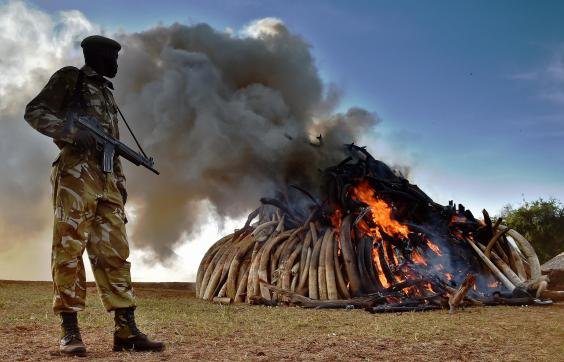
Introduction:
This paper acknowledges as a starting place an irreconcilable problem in political philosophy concerning property, specifically natural resources in the form of commodities or stores of value. The term ‘irreconcilable’ here means that both sides in a conflict will choose their side by virtue of their difference with the other side. Case in point: The Ivory Trade. The Convention on International Trade in Endangered Species (CITES) banned ivory trade in 1989. Regardless of the agreement, illegal poaching continues. We can look at John Locke’s political philosophy to see that how “Men living according to reason, without a common superior on earth, to judge between them, is properly the state of nature.” (Two Treatises 2.19). In a state of nature poachers will accumulate personal property (ivory) through their own labor regardless of any international treaty, as long as there is a need for the economic benefit derived from selling this personal property that outweighs the risk of the consequences of being caught poaching. This problem of political philosophy presents itself as a matter of reason, one where the rationality to poach or not poach is being informed by two sides that are formed through identity and difference (Eze 2008). An international body can ban the trade of a particular commodity but if people live in the natural environment where Elephants live and suffer from poverty than they have a very compelling reason not to abide by such treaty if they can get away with it. Why is this important? Elephants are a natural resource, or even more a treasure of the earth, and the conservation of the species for future generations on the planet leads to nothing other than unanimous support. The problem is how to go about conserving a species that simultaneously contains a by-product which happens to be a valuable commodity and store-of-value, especially in light of the fact that the geo-political regions where Elephant populations reside suffer from an economics of inequality and face the subsequent political conflict central to redistribution of wealth (Piketty 2014).
Attempts to curb Ivory Trade or save Elephants?
As outlined by Alejandro Nadal and Francisco Aguayo 2016 paper on the economics of Ivory stockpiles there have been 3 ways to go about stopping poaching and protecting Elephant populations from extinction. These are: “destruction of stockpiles, use of stockpiles as a deterrent against speculators (who may bank on extinction), and the sale of stockpiles in a legal market in order to reduce the incentives to poaching.” (1-2). Recently the largest burning of Ivory stockpiles in history took place in Kenya after a meeting the Giant’s club—an exclusive club comprised of African political leaders and celebrities who’s aim is to protect Elephant populations. The ceremonial burning of 105 tons of ivory was meant to send a message to poachers that the only valuable ivory is on a live animal. Global news outlets picked up on the story, and various op-ed pieces came out arguing why destroying stock piles was a wise-action (see Alden & Ross, 2016 and Kahumbu, 2016). The core argument is that holding stores of Ivory “leads to anticipations that ivory may be sold in the future, feeding expectations of continuing ivory trade and reducing the effectiveness of demand reduction policies” (ibid 2).
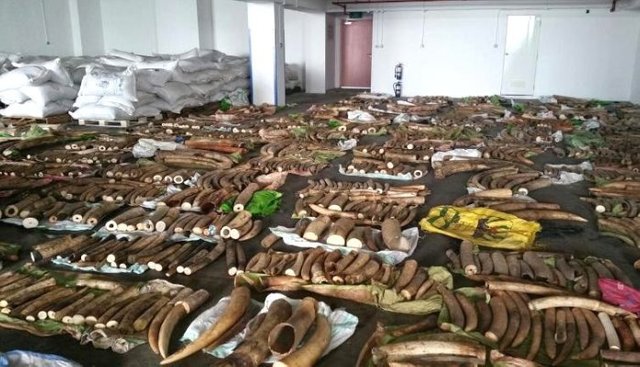
The largest legal ivory reserve is in Hong Kong, with ivory that was grandfathered-in before the 1989 international ban on ivory trade. If these dealers believed that Ivory stockpiles might be sold again in the future they have reason not to liquidate their reserves. “The prospect of capturing the rents from that future trade will lead traders and processors to remain in the business. In turn, this can lead to renewed investments, the creation of new institutions (such as schools for carvers) and consolidate the array of social routines that are related to market operations and regulations.” (Ibid 5) Even if there is a reduction in price due to an influx of state-sanctioned ivory that comes on to the market, these traders will benefit. At least this is what the data showed after a one-off sale of CITES sanctioned ivory; neither poaching-rates nor ivory prices decreased. Daniel Stiles, an independent researcher residing in Kenyan has providing empirical evidence that contradicts these findings. He looks at historical data going back to the ‘80s and the pre-Ivory ban. Of historical note is that stockpiling of raw ivory was going on in China and Hong Kong before the ban (seemingly in preparation for the ban). “If high consumer demand had been the cause of the increased poaching, the stockpiles would not have existed. The raw ivory would have been processed” (2014 pg 3). During this epoch, according to Stiles, the calls for international Ivory ban led to increased poachers because East Asian dealers chose to stockpile before the ban. It created a situation where “the two fed each other in a positive feedback loop—increased poaching, increased calls for control, leading to more poaching to stockpile, ad infinitum until the ban” (ibid. 3). If this was the case in the ‘80s then it seems counter intuitive that a one-off 2008 CITES-approved ivory sale to Japan and China would cause spike in poaching, simply because the increase in supply would drive down price—except in 2008 there was supposedly an increase in consumer demand (Russo 2014). But where did the increased demand come from. Stile’s sites the work of Yufang Gao, a researcher from China who points to factors such as (1) the Chinese government’s designating ivory carving as national intangible cultural heritage and (2) then maybe more importantly an overall boom in art investment in China—especially after the global economic crisis. “As real estate and stock markets tumbled, a large amount of capital from individuals and professional investment companies started to enter the art market…carved ivory was touted as a profitable investment. Media coverage about he astronomical prices of auctioned ivory greatly boosted the perceived economic value of ivory products, new or old, which led to an explosion of ivory demand” (Stiles 8). During this time period the price of Ivory was closely correlated to the price of Gold (Schwartz 3). Source: Stiles (2015) ‘The real reason for the drop in illegal raw ivory prices in China’. LinkedIn Pulse. https://www.linkedin.com/pulse/real-reason-drop-illegal-raw-ivory-prices-china-daniel-stiles
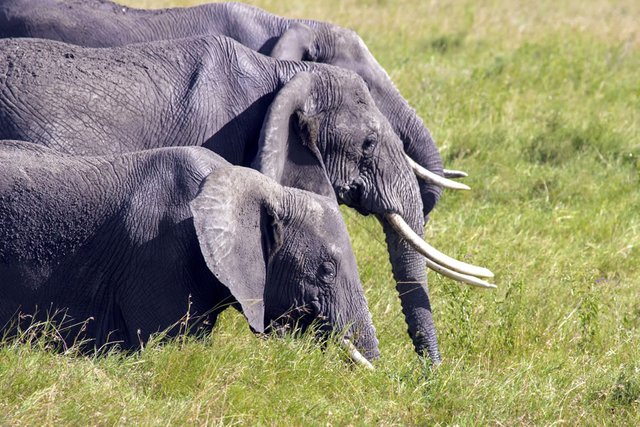
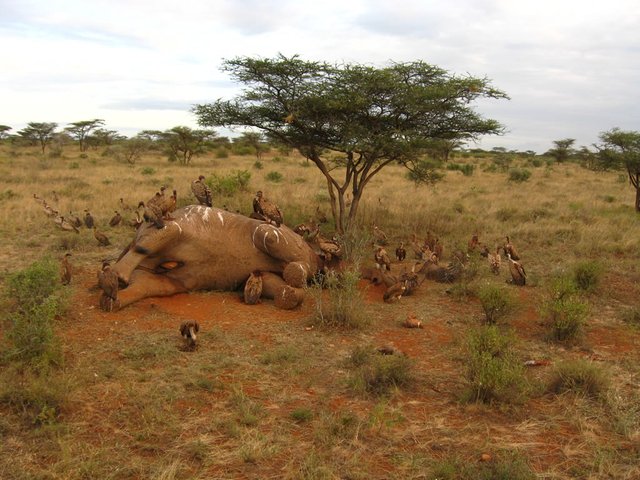
We clearly see that macroeconomic forces play an important role in Ivory trade and poaching rates. The Gordon-Schaefer model is a bio-economics model designed to incorporate as many macro-economic variables as possible into managing natural resources, and was originally applied to sustainability in fishing. This model tries to show the cheapest long-run policy that eliminates extinction of the natural resources, and in the case of Ivory, the cheapest outcome is to keep the stockpiles. It is one options at least that would prevent the positive feedback loops Stiles describes. Critics of this model say that it only works if the goods are storable but not durable (goods that are not destroyed when they are consumed are considered durable) (Nadal and Aguayo 7) Ivory is storable and durable because even after it is sold, in most cases it remains extant as ornamentation (versus Rhino tusk that is consumed and therefore not durable). A further factor is that no economic model on Ivory has explicit price formation mechanism. There is not one unique market or exchange, so clearly lacks homogeneity. Additionally much of the illicit trade in Ivory occurs with other trade (whether it be weapons, drugs, other contraband). One thing that is known for sure is that price is inversely related to population and that is the only rule we have. But to go from price to population and then look at supply and demand we must understand that consumer sentiment (demand) has a limit regardless of supply. This is because Ivory is by-in-large a luxury item. Stiles makes the analogy that “it does not matter how many consumers want to buy ivory any more than it matters how many people want a Ferrari. What matters is how many want and can afford to buy. If one really wants to lower consumer demand, it is imperative that mainly very expensive ivory items are manufactured” (Stiles 2015 pg. 6). We face a situation where the vast majority of the world can’t fathom killing an elephant for it’s ivory. The corrupt poaching networks we see today developed under the international trade ban beginning in 1989, and the African countries that have the most corrupt Ivory trade already have a ban on Ivory trade. According to Stiles, “the solution involves bringing African governments into a transparent, regulated trade that confers benefits on rural people who live with wildlife. These people are the foot soldiers of poaching. If Ivory and other wildlife products could meaningful contribute to their livelihoods in a legal manner, they would be motivated to manage wildlife for the future” (Ibid. pg. 3) A possible way forward to achieve this model that would utilize blockchain technology will be discussed in the third section of the paper. The next section however will look at the Yuasuni-ITT initiative to see if analogues in conservation of natural resources with experimental models of economics can inform the debate on elephant conservation.
Controlling supply: the economics of no availability (or future availability)
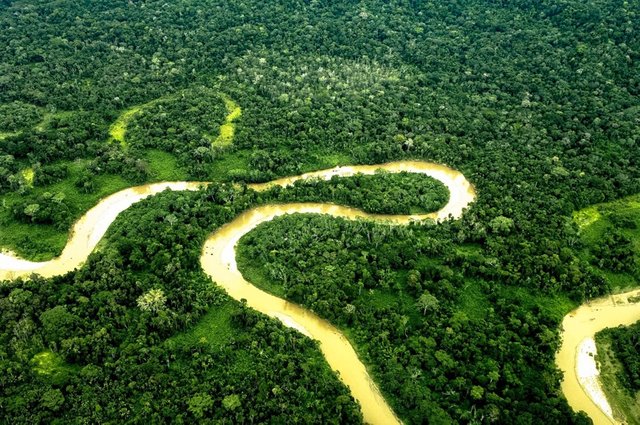
In the field of bio-economics we can look at another project that has attempted to peg a natural resource to a store of value without actually harvesting the resource. This is the Ecuador’s Yasuni-ITT initiative, started by Ecuador president Raphael Correa in 2007. It makes and attempts to peg a convertible asset to a natural resource. It was one, he said at the time of the launch, which ‘seeks to transform old notions of economics and the concept of value’. The market logic states that for a poor-country like Ecuador a reserve of oil can be extracted and bring significant increases in the GDP of the country.
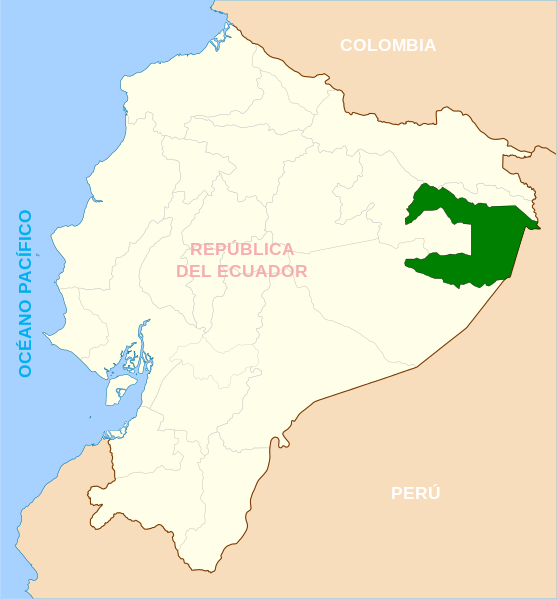
The Yasuni-ITT initiative marks an attempt to change this logic, and acknowledges the embedded context of any value exchange within a greater context of social and economic practices (Rival 3-4). This is not to say that the oil is worth more in the ground than extracted, but that with so many difficult to quantify tangibles concomitant to the extraction—depletion of primeval rainforest, displacement of indigenous peoples, and CO2 emissions coming from the combustion of such fuel—there has to be a cost-benefit threshold where the oil is worth more in the ground. This innovative proposal means that areas where there are conflicts between natural resource extraction and biodiversity protection may have another alternative to consumption of their resources in order to fuel they economy (Finner 2). This proposal seeks the save outcome with alternative actions: It’s one where value is made liquid in exchange for protecting the resources instead of extracting them. The essential part that hasn’t been determined yet is exactly how to go about accounting for the value of these natural resources. Initially in 2007 Correa had asked for around 750 million USD per-year for 10-years which would amount to roughly half the value of the projected revenues if the oil was extracted. Then in mid-2008, partly due to the global economic crisis and subsequent difficulty in finding contributions, the strategy shifted. Ecuador announced that it would issue ‘Yasuni Guarantee Certificates’ for the CO2 locked in the oil fields with the objective of making them fungible in the European Union’s carbon credits market” (Finner 3). A YGC would offset 1-ton of carbon emissions in the same way that other carbon credits offset carbon emissions. There are questions concerning what might happen with future governments, who could change the decision and decide to drill. In the proposed scenario however the proceeds from the YGCs would be held in a trust and only the interest on the trust would be used to fund government projects in the country. In the case that drilling in the Yasuni took place the assets of the trust would be liquidated and returned to their original owners. The Yasuni-ITT initiative, going on 8-years since the initial proposal, has not be successful in the sense that the project is still in peril, and the possibility for drilling still exists (in fact permits for drilling were signed in 2014, with Correa saying that “the world has failed us” after only 13-million of the over 3-billion dollar goal had been earmarked for the project). Critics say that the project was doomed from the start because Correa was negotiating mining rights even has he brought the conservation project to the international community (Keyman 2015). Regardless the idea has sparked much debate and theorizing about a new-way forward to finance projects without destroying biodiversity. One of the ironies in the project is that blockchain technology was just beginning to be developed at the same time as the Yasuni-ITT initiative was first advanced. The possibility that this technology could be integrated with a bio-economic project will be the subject of the rest of this paper.
Pegging digital assets to natural resources
We know that individuals use Ivory as a store of value, especially in times of economic crises, because of its perceived status as a safe asset with low volatility. This means that it has inherent value as an investment vehicle. The problem is that elephants produce ivory, and the only way to possess the value of the ivory (as personal property) is by killing the elephant, waiting for the elephant to die naturally. We have empirical data on the amount of natural deaths of elephants on a yearly-basis, as well as the amount of stockpiled Ivory, as well as the number of deaths due to PAC (problem-animal-control). The numbers were generated by Kathleen Gobrush for Save the Elephants and are cited by Stiles (2015). According to his calculations 60 tons of legal ivory could be exported from Africa annually for at least ten-years, without a single poached tusk needed. This scenario of course only occurs if CITES lifts the ban on Ivory trade, in favor for state-sanctioned yearly auctions.
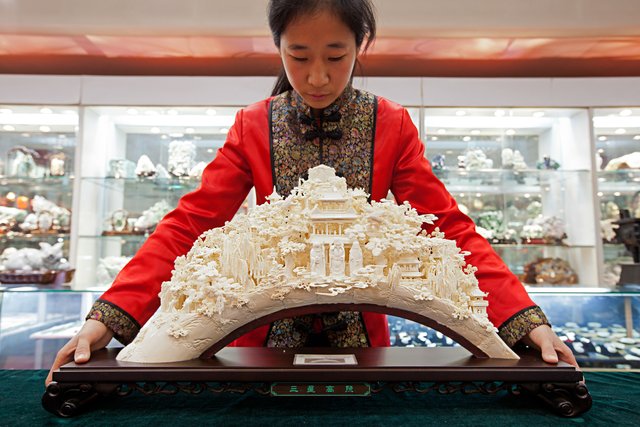
By utilizing a blockchain however it might be possible to do something to save elephant populations, even without CITES lifting the ban. A blockchain is a transparent account ledger maintained by a distributed network and agreed on through a consensus protocol (see Berger 2014, Stalnaker, 2014, Bolier 2012). As a technology, blockchain has gained most notoriety from the experiment in open-source currency called Bitcoin. It’s possible to use either the same blockchain as bitcoin, issuing a digital asset on top of the bitcoin blockchain, or to create a new blockchain and issues assets over that blockchain. Each scenario has benefits and drawbacks, but for the purposes of this paper in either scenario these tokens can represent anything the issuer desires and the value, like any commodity, virtual or otherwise is totally market driven. Creating a token that represents the total insitu Ivory would allow conservationists to transfer (and engage in all the financing available from liquid capital) the value of such tokens without having them removed from living elephants. The value of 60 tons of legal ivory at current wholesale market prices of $2000 per-pound is roughly between 250-200 million USD. However of much greater value is the total insitu Ivory: that’s living ivory on elephants. And here ‘living’ is not just a rhetorical device but literal because ivory continues to grow until the day that an elephant dies. We have empirical data that shows individuals invest in ivory as a store-of-value, especially in order to protect capital in times of economic volatility. So what if it were possible to invest in insitu ivory? There is currently a problem with pegging a digital asset to a natural resource: namely the onboarding. Who is to be the authority that says how the Elephant population is decreasing or increasing (in lieu of putting trackers on every Elephant)? We need a group of curators or otherwise trusted individuals to verify the elephant population year-over-year. This however can surely be achieved by a trust. The other issue regards the typical inverse relationship between value and scarcity we find in economics. Normally the scarcer an asset is the more valuable it becomes. Gold, for example, is seen as a valuable asset because it is finite in value. But if a scientist discovers how to cheaply produce gold from a synthetic process then the increased lack of scarcity will have a inversely negative effect on the price of gold. With the case of insitu ivory the more elephants that were poached (a drop in population) would decrease the stock and thus value of the token, so holders of the token would become de facto conservationists because of the economic prerogative to protect elephants. We create a float of tokens that represents the total value of insitu Ivory. However no one wants Elephants to become extinct so a scenario where the elephant population dwindles to extinction-levels and the value of this token soars in value is not enviable. Rather, there must be an inverse relationship to the normally inverse relationship of wealth and scarcity. But the value of the token is only indirectly correlated with ivory price. It is actually directly correlated in terms of quantity, like an inventory. So while a drop in population would in the short-term increase the value of the coin, in the long-term a bigger elephant population means a much larger total value in ivory. This long-term goal is a scenario that would stop the positive feedback loop described by Stiles. People that will want to invest in this token will be those who want to see Elephant populations grow and flourish. An investor in the token will be banking that Elephant populations will reach levels where the ban on Ivory trade may be removed. Once the elephant populations stabilize and legal, transparent trade can be removed then investors can redeem the tokens for the market value or if choosing to hold the coins receive a dividend from the proceeds of future sales. The token would also be an ideal investment for those same individuals who had previously bought physical-ivory during economic crises. In some cases it would even be more enviable because since it is a digitally controlled asset is much more liquid than possessing physical ivory. A large portion of the proceeds from the sale of the tokens would need to go to conservation trust. The communities that are closest to the Elephants are those who in many respects (and like the indigenous communities of Ecuador) own the natural resources. If they can hold tokens as a community bank than their value can be leveraged for community projects and infrastructure that will bring wealth into the community without having to make the decision to murder elephants for capital gain.
Bibliography
International Fund For Animal Welfare (2013) Criminal Nature: The Global Security Implications of the Illegal Wildlife Trade. http://www.ifaw.org/sites/default/files/ifaw-criminal-nature-UK.pdf
Alden Chris & Harvey, Ross (2016) Why Kenya’s ivory stockpile destruction makes economic sense, in Saila. http://www.saiia.org.za/opinion-analysis/why-kenyas-ivory-stockpile-destruction-makes-economic-sense
Bolier, D ‘Re-Inventing Markets and Governance through new “Trust Frameworks” 2012: https://idcubed.org/wp-content/uploads/2012/11/future-of-finance.pdf
Eze, Emmanuel Chukwudi (2008) On Reason: Rationality in a World of Cultural Conflict and Racisim, Duke University Press: Durham Finer,
Matt & Jenkins, Clinton (2010) Leaving the Oil Under the Amazon: Ecuador’s Yasuni’i-ITT Initiative. Biotropica, https://www.researchgate.net/profile/Clinton_Jenkins/publication/216775739_Leaving_the_Oil_Under_the_Amazon_Ecuador's_Yasun'i-ITT_Initiative/links/00b7d5212c2b562526000000.pdf
Guardiola-Rivera (2010) What if Latin America Rules the World? Bloomsbury: London Kahumbu, Paula (2016) Why it makes sense to burn ivory stockpiles, in The Guardian. https://www.theguardian.com/environment/africa-wild/2016/apr/23/why-it-makes-sense-to-burn-ivory-stockpiles
Keyman, Ariana (2015) Evaluating Ecuador’s Decision to Abandon the Yasuni-Itt Initiative, in E-International Relations Students. http://www.e-ir.info/2015/02/22/evaluating-ecuadors-decision-to-abandon-the-yasuni-itt-initiative/
Laron, J. (2013) Who Owns the Future, Simon & Schuster: New York Locke, John (2016) Two Treatises of Government, found in Stanford Enclyclopedia of Philosophy. http://plato.stanford.edu/entries/locke-political/
Nadal & Aguayo (2016) Use or Destruction: On the Economics of Ivory Stockpiles. As-yet-unpublished work for Pachyderm Journal. http://www.pachydermjournal.org/
Piketty, Thomas (2015) The Economics of Inequality, Belknap Press: New York
France-Presse, Agence (2015) ‘Ivory price drop in China singals fall in demand, report says’ The Guardian. https://www.theguardian.com/environment/2015/dec/08/ivory-price-drop-in-china-signals-fall-in-demand-report-says
Rival, Laura (2010) Ecuador’s Yasuni-ITT Initiative: The Old and New Value of Petroleum, in Ecological Economics: https://www.researchgate.net/profile/Laura_Rival/publication/223425751_Ecuador's_Yasuni-ITT_Initiative_The_Old_and_New_Values_of_Petroleum/links/54579b1b0cf2bccc49111023.pdf
Stalnaker S. ‘Ven and the Nature of Money’ in From Bitcoin to Burning Man, Ed. Clippinger, John and Bollier, David. 2014: https://idcubed.org/bitcoin-burning-man-beyond/
Stiles, Daniel (2015) ‘Only legal Ivory can stop poaching’. Earth Island Journal, http://www.earthisland.org/journal/index.php/eij/article/stiles/
Stiles, Daniel (2015) ‘The real reason for the drop in Illegal Raw Ivory prices in China” LinkedIn Pules: https://www.linkedin.com/pulse/real-reason-drop-illegal-raw-ivory-prices-china-daniel-stiles?trk=prof-post
Schwartz, Michael (2016) “Link between Ivory Price drop and China’s trade ban Questioned” National Geographic Voices http://voices.nationalgeographic.com/2016/01/26/link-between-ivory-price-drop-and-chinas-trade-ban-questioned/
Wladawsky-Berger, I. “The Internet of Money” in From Bitcoin to Burning Man, Ed. Clippinger, John and Bollier, David. 2014: https://idcubed.org/bitcoin-burning-man-beyond/